Plymouth, Stonehouse and Devonport Tramways
Summary
The Plymouth, Stonehouse and Devonport Tramways Company system was the first horse tramway built under the Tramways Act of 1870, and the photographic record for its almost 30 years of horse-drawn operation (1872-1901) is relatively rich. In common with the vast majority of Victorian horse tram-operators, the PS&DTCo did not issue uniforms, instead, staff were required to wear smart but informal attire, i.e. shirts and ties, jackets and overcoats or coachman's coats; headgear was also down to personal choice, ranging from top hats (in the early days), through the ubiquitous bowler, to the flat cap (in the late 1890s). No insignia — including licence badges — was carried on either the jackets or the hats.
The photographic record for the PS&DTCo's electric era — which lasted from 1901 up to 1922, when the enterprise was sold to Plymouth Corporation — is surprisingly sparse, though it is fortunately made up for by an excellent staff photo that was taken at the very end of company ownership. Conductors and motormen appear to have worn double-breasted, lancer-style tunics with five pairs of buttons and stand-up collars; somewhat unusually for a UK tramway uniform, the collars were left plain. At some point, single-breasted jackets were issued, though whether this was to both motormen and conductors or perhaps only conductors, is unclear. The jackets were single-breasted with five buttons and stand-up collars; like the double-breasted jackets, the collars were left plain. Some jackets had epaulettes, though this appears to have been the exception; apart from a button fastening at the neck end, these were also unadorned. The tensioned-crown peaked caps bore a large, voided (i.e., open-backed), nickel badge, which consisted of 'PS&D' (in curved letters), above 'TY.Co.' (see below for an example).
Inspectors wore typical tramway inspector garb, namely: single-breasted jackets with hidden buttons (or more likely an hook and eye affair), with a slit breast pocket; the pocket and the jacket were both edged in a finer material than the main body, the same material also being used for chevron embellishments on the sleeve cuffs. The jackets bore stand-up collars that carried the bearer's grade 'Inspector' – in embroidered script lettering. The tensioned-crown peaked caps also bore the grade, embroidered on a hat band; in later years, this was usually in block lettering ('INSPECTOR'), though script-lettering was also used ('Inspector') .
The PS&DTCo presumably employed female staff during the Great War to replace male staff lost to the armed services (a common policy adopted by most UK tramway systems); however, neither documentary nor photographic evidence is available to prove this either way.
For a history of Plymouth's tramway systems, see: 'The Trams of Plymouth - a 73 Years Story' by Martin Langley and Edwina Small; Ex Libris Press (1990).
Images
Horse tram drivers and conductors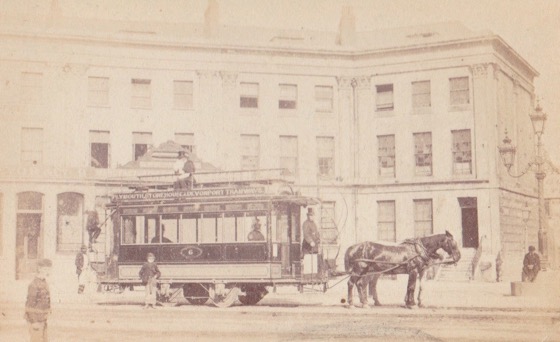
A very early shot of Horsecar No 6 — photo undated, but possibly taken in the 1870s. Neither the driver nor the conductor (standing in front of the tram towards the rear) are wearing a uniform.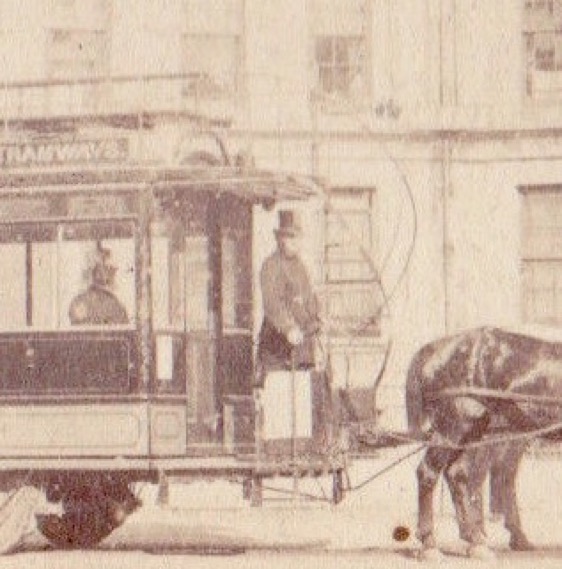
An enlargement of the above photograph showing the driver, in his coachman's coat and top hat.
Another early photograph, this time of Horsecar No 4 at the Octagon, probably taken in the 1870s or 1880s. Photo courtesy of the National Tramway Museum. 
An enlargement of the above photograph showing the driver who, like his conductor, is wearing informal attire.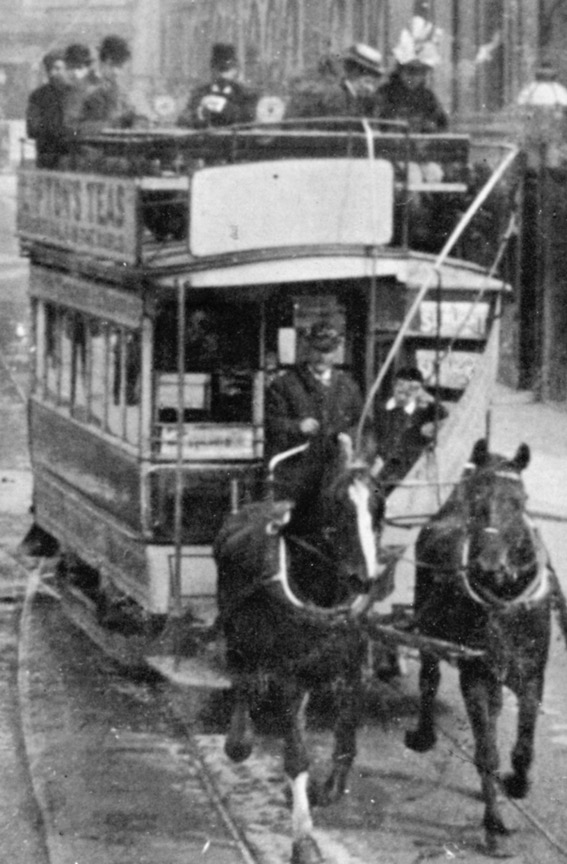
An unidentified PS&DTCo horsecar at the Octagon — photo undated, but probably taken in the 1890s. The driver is wearing a heavy-duty overcoat and a bowler hat. Photo courtesy of the Tramways and Light Railway Society, with thanks to David Voice.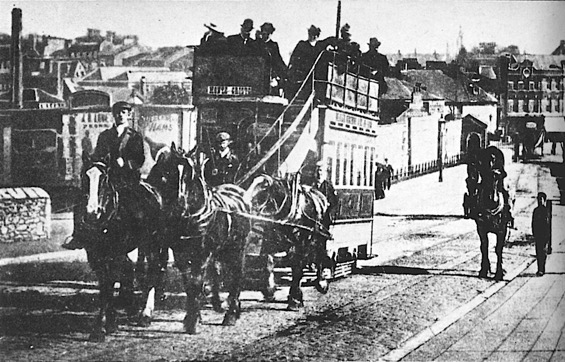
A PS&DTCo horsecar at the Halfpenny Gate starting its ascent of Devonport Hill, which apparently took four horses and a trace horse — photo undated, but probably taken in the late 1890s. Both the trace horse man and the driver are wearing flat caps. Photo courtesy of the Tramways and Light Railway Society, with thanks to David Voice.
An unidentified PS&DTCo horsecar, pictured in Union Street in 1900. Photo courtesy of the National Tramway Museum. 
An enlargement of the above photograph showing the driver; he is wearing a heavy-duty jacket and a bowler hat. Once again, there is no sign of any badges, including a licence badge.
Motormen and conductors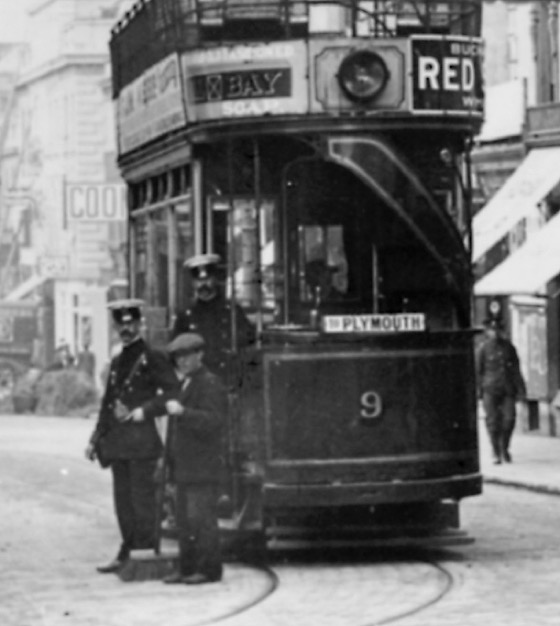
Tramcar No 9 and crew — photo undated, but judging by the fashions, both sartorial and facial, probably Edwardian. Both of the crewmen are wearing lancer-style tunics with white rain covers on their caps, the latter indicating that it was summer. Photo courtesy of the Tramways and Light Railway Society, with thanks to David Voice.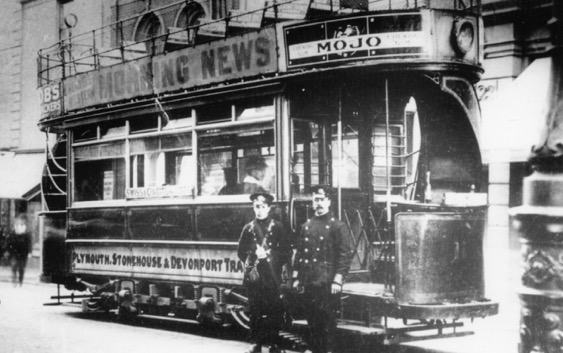
The crew of PS&DTCo Tramcar No 11 pose for the cameraman in Fore Street, Devonport — photo undated, but probably taken shortly after the Great War. Photo courtesy of the Tramways and Light Railway Society, with thanks to David Voice.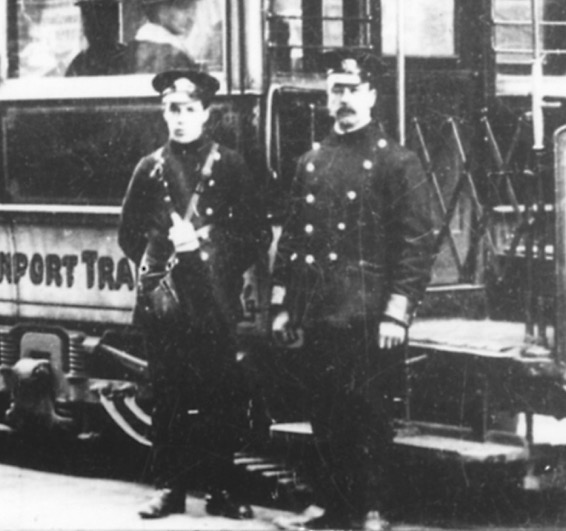
An enlargement of the above photograph showing the conductor and the motorman. Although of poor quality, it does show the general shape of the cap badge, and that both men's tunic collars are devoid of badges.
A superb photograph of what is probably the entire staff of Market Street depot, which though undated, is strongly redolent of the early 1920s, especially the large flat caps. It is tempting to speculate that it was taken to mark the end of the company's tenure, around the time the system was taken over by Plymouth Corporation (1st July 1922). Author's Collection.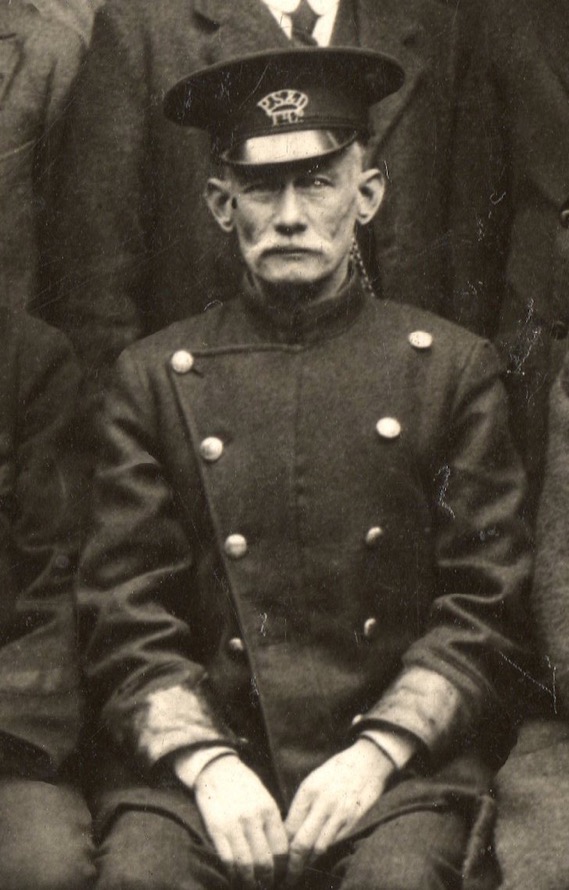
An enlargement of the above photograph showing an individual who is more than likely a motorman. He is wearing a lancer-style tunic with stand-up collars, the latter without insignia of any kind. His cap bears a voided badge comprising the company initials: 'PS&D TY.Co.'.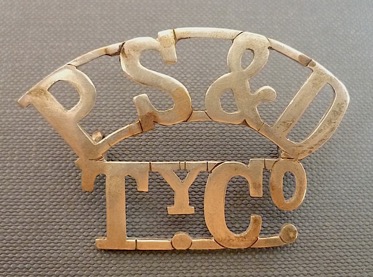
Plymouth, Stonehouse and Devonport Tramways Company cap badge from the electric era (1901-1922) — nickel. Author's Collection.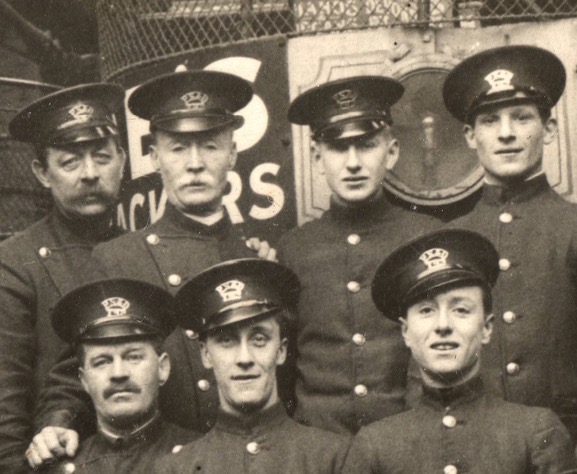
Another blow-up of the 1920s staff photograph above showing a group of motormen and conductors in single-breasted and double-breasted (lancer-style) jackets; neither style of jacket carries a badge or insignia of any kind.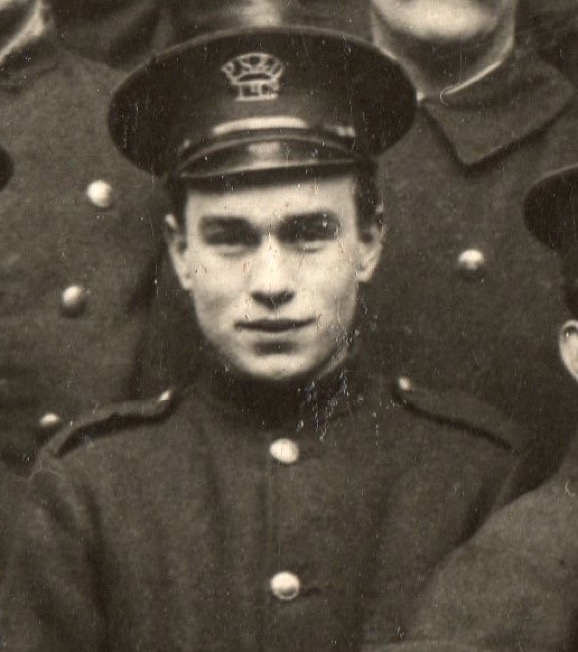
An individual, possibly a conductor, wearing a single-breasted jacket with epaulettes (again unmarked). Most of the individuals in the main photograph have tunics without epaulettes. The photo is sharp enough to make out the plain scalloped-rim uniform buttons.
Senior staff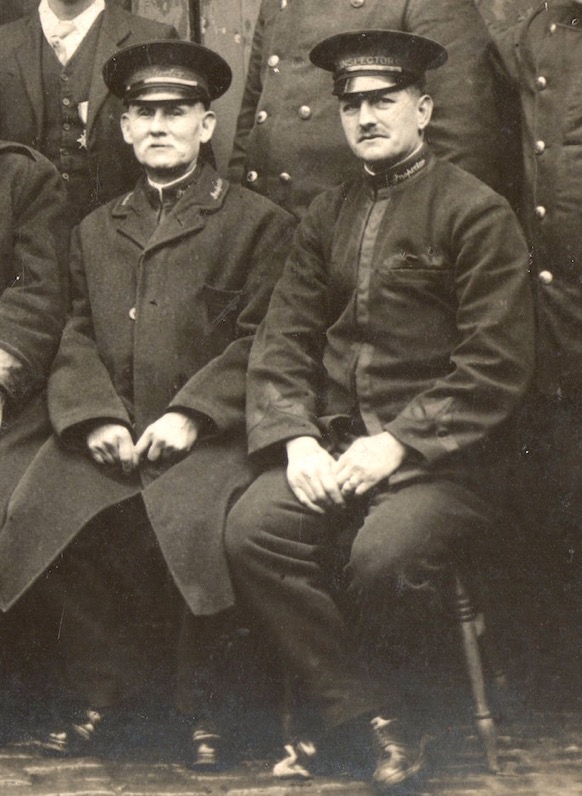
An enlargement of the 1920s staff photograph above showing two of the four inspectors. The man on the left is wearing an overcoat with 'Inspector' embroidered on the collars. Although both men have their grade embroidered on a hat band, in one case this would appear to be script lettering, whilst in the other case, it is clearly rendered in block letters (as with the remaining two inspectors — not shown).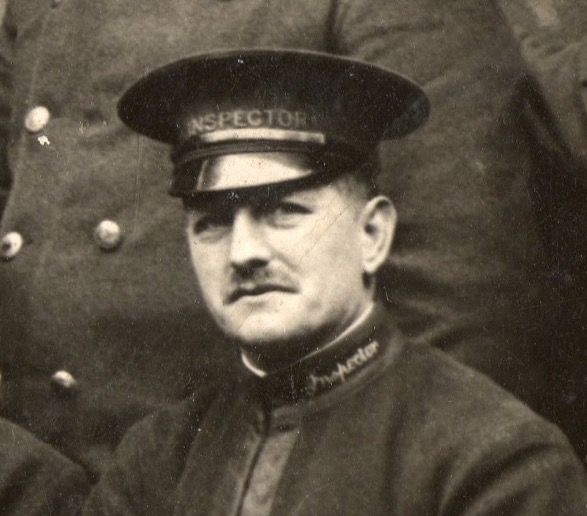
Another blow-up of the above photo showing details of the inspector's uniform.